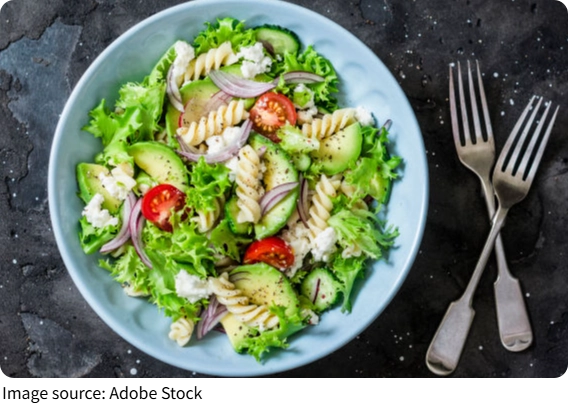Flavorful Vegan Cooking Tips

Even if you're not fully vegan, you've probably wondered at some point: "Can plant-based meals really have that deep, savory, smoky taste that meat dishes do?"
The answer is absolutely yes—and the secret lies in how you cook, not just what you cook.
Vegan food doesn't have to be bland or boiled. With the right techniques, even a humble cabbage stir-fry or roasted carrots can feel like street food bursting with flavor.
This article dives into how to create that grilled-like richness—what some call the smoky soul of cooking—without using meat or animal products.
1. Embrace High-Heat Cooking
Searing vegetables at high heat is one of the best ways to develop rich, savory flavor.
Use a cast iron skillet or carbon steel pan, and don't overcrowd it. Overcrowding steams your food instead of browning it. Whether you're making vegan stir-fry or sautéing mushrooms, let them sit undisturbed for a few minutes to develop color before tossing.
For example, charred broccolini or blistered shishito peppers taste incredibly satisfying, even without sauces. The slight bitterness from the char plays beautifully with sweet glazes or citrus.
2. Savor Without a Grill
You don't need a BBQ to get smoky flavors. Here are two accessible ways:
1. Liquid smokiness: Just a few drops in beans, vegan chili, or tempeh marinade can mimic hours of slow-cooking. Use sparingly—it's strong.
2. Roasted paprika: This spice is gold. It's perfect in roasted chickpeas, lentil stews, or even sprinkled over vegan pasta and cheese.
Both of these options are shelf-stable and instantly add depth to otherwise mild plant-based dishes.
3. Layer Umami
What makes meat-based dishes so satisfying often boils down to one thing: umami—the savory fifth taste. But guess what? Plants have it too.
Here's how to build umami in vegan cooking:
1. Mushrooms: Shiitake, portobello, and cremini mushrooms are packed with glutamates. Roast or grill them for extra depth.
2. Tomato paste: Just a spoonful, especially when browned slightly in oil, can deepen any stew or soup.
3. Nutritional yeast: This flaky golden powder gives a cheesy, nutty flavor to sauces, soups, or even popcorn.
4. Fermented foods: Miso paste, soy sauce, and kimchi add funk and complexity. A spoonful of white miso in mashed potatoes or soups can transform the dish.
4. Use Bold Marinades and Glazes
One trick to making vegan dishes crave-worthy is how you season and finish them. A strong marinade can elevate bean curd, tempeh, or even vegetables.
Here's a simple, flavorful glaze that works on everything from bean curd to roasted eggplant:
Smoky Maple Glaze:
• 2 tbsp maple syrup
• 1 tbsp soy sauce
• ½ tsp fire-roasted paprika
• 1 tsp Dijon mustard
• Optional: a dash of liquid smokiness or grated garlic
Brush it on before roasting or grilling to create a slightly sticky, caramelized coating. It's especially good on cauliflower steaks or grilled zucchini.
5. Don't Skip the Crunch
Texture is key. Sometimes people think plant-based meals are mushy or one-note. But adding crunch makes a world of difference.
Try these ideas:
1. Toasted nuts and seeds: Pumpkin seeds on creamy soups, or toasted almonds on sautéed greens.
2. Crispy chickpeas: Bake or air-fry with olive oil, cumin, and garlic powder.
3. Pickled onions or radishes: Add a tangy snap to sandwiches, tacos, or grain bowls.
4. Pan-fried bean curd or tempeh: Press bean curd well, then cook until golden on each side. Let it get crispy!
6. Use Aromatics Like a Pro
No matter what cuisine you're cooking, layering flavor starts with aromatics.
Sauté finely chopped onions, garlic, scallions, shallots, and ginger in oil before adding anything else. Let them sweat, soften, and slightly brown to draw out their natural sugars. In cooking, for instance, this step is critical for building a good curry base. In Vietnamese vegan dishes, garlic and shallots are often fried until crisp and used as toppings.
7. Caramelization is Your Friend
When vegetables caramelize, their natural sugars come out, creating depth and complexity.
Best vegetables to caramelize:
1. Carrots and parsnips – Roast with olive oil and balsamic vinegar.
2. Onions – Slow-cook them for 30–40 minutes for sweet, jammy flavor.
3. Brussels sprouts – Halve and roast face-down until browned.
Roasted vegetables develop a "meaty" sweetness when cooked properly. Don't rush the process.
Dr. Lisa Young, a nutrition professor at New York University, has noted that techniques such as caramelization and using umami-rich foods can make plant-based dishes more satisfying.

Let's Wrap It Up
Vegan cooking isn't about copying meat—it's about unlocking the natural flavors in plant-based ingredients. The joy comes from learning how to coax out smokiness, crunch, and umami without relying on animal products. Whether you're a lifelong vegan or just dabbling, these techniques can change the way you see your kitchen.
So next time someone tells you vegan food is boring, invite them over and serve charred eggplant drizzled with tahini or crispy bean curd glazed with maple flavor. Then ask them again.
What's your go-to trick for boosting flavor in vegan meals? Tell us in the comments—we'd love to hear your ideas.


